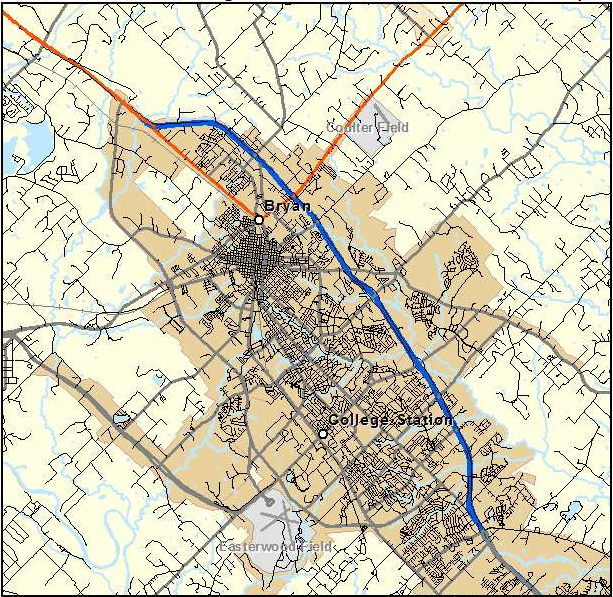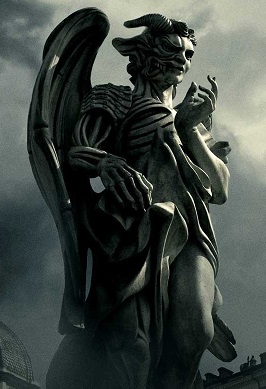Bryan, TNRT
Contents
- 1 Quote
- 2 Appearance
- 3 City Device
- 4 Climate
- 5 Districts
- 6 Demonym
- 7 Economy
- 8 Geography
- 9 History
- 10 Population
- 11 Arenas
- 12 Attractions
- 13 Bars and Clubs
- 14 Cemeteries
- 15 City Government
- 16 Crime
- 17 Citizens of the City
- 18 Current Events
- 19 Fortifications
- 20 Galleries
- 21 Holy Ground
- 22 Hospitals
- 23 Hotels & Hostels
- 24 Landmarks
- 25 Maps
- 26 Mass Media
- 27 Monuments
- 28 Museums
- 29 Parks
- 30 Private Residences
- 31 Restaurants
- 32 Ruins
- 33 Schools
- 34 Shopping
- 35 Telecommunications
- 36 Theaters
- 37 Transportation
- 38 Ranger Strike Teams 1 & 2 (8 Kindred)
- 39 Websites
- 40 Dedication
Quote
Appearance
City Device
Climate
Districts
Demonym
Economy
Geography
History
Introduction
Like many Texas communities in the mid- and late-19th century, Bryan began as a small-town stop along the state's expanding railway system. But almost from the beginning, Bryan was different: It quickly distinguished itself from the many other railway stops across the state by flourishing into a vibrant--and permanent--center of business and trade.
In the nearly 170 years since Bryan's founding, many Texas railroad stops became nothing more than ghost towns. But the optimistic spirit and determination that built Bryan in its early years continues to define Bryan today. It is a community that successfully couples dynamic growth with historic importance.
In the Beginning
Before there was Bryan, there was Millican. The Houston and Texas Central (H&TC) Railroad Co. arrived in this community in 1860, making it the northernmost terminus. It soon became a vital distribution center for freight and Confederate troops throughout the Civil War.
That same year, William Joel Bryan, nephew of Stephen F. Austin, sold a single square-mile tract in a townsite north of Millican to railroad directors Abram Groesbeck and W.R. Baker. The $3,200 purchase would soon become a full-fledged city serving the railway, its employees and its passengers. The townsite was named "Bryan" in William Joel Bryan's honor.
Further expansion of the H&TC railroad was halted during the Civil War, but resumed afterward. Anticipating the arrival of the rail to Bryan in 1866, Brazos County citizens voted 190-42 to move both the county seat and the post office from Boonville to Bryan, which had grown into a village of about 300 residents (at the time, only white residents were included in official records).
On Aug. 19, 1867, the first train steamed into Bryan amidst a gala celebration. But as Bryan residents celebrated, Millican residents faced tremendous hardship. Yellow fever swept through their community only a few weeks after the railroad came to Bryan, and much of the town's population shifted to the new county seat.
In the early decades of the 20th century, small spur tracks ran to the Brazos River bottom, linking the rich cotton-producing lands with the city's five gins, two cotton yards, compresses, warehouses and rail lines to distant markets. In addition, its agricultural and mercantile businesses were linked by rail to major markets across the county. Downtown Bryan therefore grew to become the business hub for a large surrounding area.
By 1870, Bryan had replaced Millican and Boonville as Brazos County's center of commerce. Its population had increased 232 percent in a single decade.
With an independence customary in Brazos County, the town's businessmen chose business locations that better suited their own purposes than the city plan. They built their stores on the west side of the tracks where the lots were cheaper than those surrounding the courthouse. Backing the shops up to the railroad also facilitated loading. Thus Main Street was located at its present site.
A new county seat required a new courthouse. Before construction was begun on that structure, however, a jail was completed on the courthouse square. The 10-by-12-foot one-room building was 15 feet above the ground, resting on four upright logs. The door was reached by a removable ladder. The structure was dubbed "Bryan Sky Parlor." It was replaced in 1877 by a larger jail with steel cages.
The courthouse contract was awarded in 1868 to Harvey Mitchell. The two-story brick building was completed in 1871, but it soon proved unsatisfactory when the foundation began to give way and the soft brick cracked. It was torn down in 1892 when a new courthouse of white sandstone was built.
City Organized
Although Bryan residents voted in 1867 to incorporate, the town was not formally incorporated until an act of the Texas Legislature in 1871. Non-official organizations arose in the early 1870s to promote agriculture, trade and cultural opportunities. Among them were: the Central Texas Agricultural and Mechanical Association, chartered for the purpose of holding at least one county fair each year; the Bryan Real Estate, Building, and Joint Stock Association of Bryan; the Bryan Bridge Company, established to encourage trade by getting a bridge built across the Navasota River on a road to Madisonville; and the Library Association.
The following year, citizens voted to establish a public school system and to levy property tax for its support. The first tax-supported school opened in 1880 under the name of "Bryan Grade School," and its first graduates completed the 10th Grade School four years later. Private schools joining the educational system included Allen Academy in 1899 and Villa Maria Ursuline Academy for girls in 1901.
In the late 1800s, a large number of German, Czech and Italian immigrants settled in the Brazos River Valley. Their children and grandchildren left area cotton farms and moved to Bryan, many entering the business world. Attracted by the community's prosperity, a merchant class developed. Many businessmen were involved in the export of cotton, grain, oil, livestock, wool and hides.
Guy M. Bryan Jr. had established a money-lending office in 1875. By 1890, another major financial institution--the First National Bank of Bryan--had been established, as had utilities in the form of Bryan Compress Company and Bryan Water, Inc. and Electric Light Co., Inc. Bryan's first telephones were installed in 1918.
Bryan also benefited from the Agriculture and Mechanical College (Texas A&M), which opened its doors in 1876. The college was located four miles outside of Bryan on land given to the state by Harvey Mitchell.
Along with physical city development came increased intellectual pursuits. Bryan's first newspaper, Brazos Pilot, began weekly publication in 1876. It was joined by the Bryan Weekly Eagle in 1889. In 1910, Bryan's first daily paper, the Bryan Eagle, succeeded both weeklies.
The Carnegie Library was founded in 1902 with a $10,000 gift from nationally recognized philanthropist Andrew Carnegie. The Carnegie served the community until 1969 when the city opened the Bryan Public Library. Today, the renovated library houses the Carnegie Center of Brazos Valley History. Bryan's is the oldest existing Carnegie Library in Texas.
The Community Thrives and Diversifies
The turn of the century saw a host of new additions and developments in Bryan. A sewer system was built and street lights installed to serve the business district, free city mail delivery was established, and the Bryan-College Station Interurban trolley began operation. By 1915, Main and Bryan streets had been paved, accommodating the increasing number of automobiles.
As the century wore on, Bryan's residential areas began benefiting from the developments previously reserved for the business district. In 1913, a modern sewage disposal plant was built for the western part of the city. From 1919 to 1925, streetlights were installed in residential areas.
The city's North Side historically has been home to Bryan's African-American community. Newly freed African Americans settled in an area around Orleans and Preston streets known as "Freedmanstown," African-American business and professional offices traditionally operated at the northern end of Main and Bryan streets. Today, the Martin Luther King Jr. corridor serves as a primary artery to Bryan's largest African-American neighborhood, with a mix of commercial, religious and residential structures along its entire length.
Individuals of Hispanic descent have had land holdings in Brazos County since before its inception. Increased migration from Mexico occurred during the 1910s and 1920s, then again in recent decades. Today, Bryan takes pride in the rich diversity of its residents. In fact, the demographics of Bryan directly reflect those of the entire state of Texas.
Time Marches On
Throughout the early 1900s, Bryan continued to flourish, partly due to its rich agricultural farmlands, the railroad and the area's abundance of cotton, cattle and oil. Bryan survived the hard times of the Great Depression and continued to grow through the post-war years. In the late 1960s, local business interests established the Brazos County Industrial Park, creating an enhanced atmosphere for industrial development. The Bryan Business Park followed, fueling the area's growth.
In terms of recreation, Bryan added a number of city parks to its landscape, beginning with Oak Grove Park in 1913. In 1922, Bryan High School was the state championship in the first UIL football game ever played. Seven years later, a football field was bought for Stephen F. Austin High School. In 1939, Bryan developed its 18-hole Municipal Golf Course.
The Bryan Air Base was activated in 1942, deactivated in 1945, then reactivated in 1951. In the 1940s, the base served as a temporary campus for Texas A&M College freshmen. A hospital established on the base boasted an obstetrics ward. The air base was phased out in 1959, and in 1962, the property became home to the Texas A&M Research Annex.
In 1958, Townshire became Bryan's first major shopping center. Its first enclosed shopping center, Manor East Mall, opened in 1972. The creation of shopping centers away from downtown, however, created a strain on the Central Business District. Downtown Bryan began a slow decline.
In the late 1980s, a movement toward downtown revitalization began, bringing businesses and interest back to Downtown Bryan. In 1992, Bryan became a Texas Main Street City, receiving design and technical assistance from the Texas Historical Commission.
But Bryan's downtown business district isn't the city's only area that can boast of its heritage. An East Side Historic District was created in the 1980s, and close to 50 Bryan homes and other structures are listed on the National Register of Historical Places.
Today, businesses are opening, expanding and relocating in Downtown Bryan, breathing new life into the area. This push toward downtown revitalization is now enabling people to experience the shops, restaurants, hotels and businesses that are working together to restore Downtown Bryan to the thriving hub of its glory days.
Bryan Today
Bryan has greeted the 21st century with a vital and robust economy, quality schools, state-of-the-art healthcare, safe neighborhoods and a history that is reflected in the buildings and pride of its residents. The original square-mile townsite now encompasses more than 43.4 square miles. And Bryan's original population of a few hundred has grown to almost 97,259 residents.
From its contemporary Tejas Center to its revived historic downtown, today's Bryan is defined by renewed growth, development and renovation.
Population
- -- Bryan (97,259) - 2031 census
- -- College Station (148,868) - 2031 census
- -- Outlying Districts (195,821) - 2031 census
- -- Metro Bryan-College Station (441,948) - 2031 census
Arenas
Attractions
Bars and Clubs
Cemeteries
City Government
Crime
Citizens of the City
Current Events
Fortifications
Galleries
Holy Ground
Hospitals
Hotels & Hostels
Landmarks
Maps

http://www.bing.com/maps/default.aspx?encType=1&where1=Bryan%2c+Texas&cp=30.6709804534912~-96.3704223632813&FORM=MIRE#Y3A9MzAuNjcwNTQ1fi05Ni4zNzA2MjgmbHZsPTEzJnN0eT1yJnRtPSU3QiUyMldlbGNvbWVQYW5lbFRhc2slMjQlMjQxJTIyJTNBbnVsbCU3RA==
Mass Media
Monuments
Museums
Parks
Private Residences
Restaurants
Ruins
Schools
Shopping
Telecommunications
Theaters
Transportation
Ranger Strike Teams 1 & 2 (8 Kindred)
Porfirio Rivero -- Samedi Leader of Ranger Strike Team One
Appearance:
Behavior:
History:
Recent Events:
- -- <<Porfirio Rivero's Statistics>>
Vasilica -- Gargoyle Leader of Ranger Strike Team Two
Appearance:
Behavior:
History:
Recent Events:
- -- <<Vasilica's Statistics>>
Websites
http://en.wikipedia.org/wiki/Bryan,_Texas#Colleges
http://en.wikipedia.org/wiki/College_Station,_Texas
http://www.bryantx.gov/departments/?name=history (historical source)
Dedication
"Chelsea, this one is for you." -- Bruce


